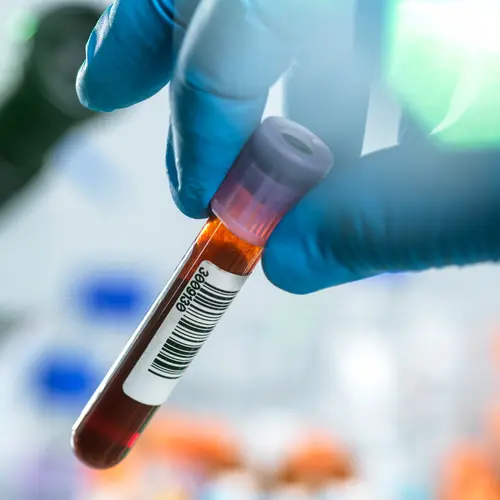Men and women both have corpora cavernosa. These are important tissues for sexual function and arousal.
Corpora Cavernosa and the Penis
The corpora cavernosa are two columns of spongy tissue in the shaft of your penis. They are two of the three tissues — the third being corpus spongiosum — that are responsible for an erection.
The cavernosa, individually called the corpus cavernosum, form most of your penis. They are filled with erectile tissue. This tissue contains nerves, blood vessels, and muscle fibers.
The inside of the cavernosa is almost like swiss cheese and the spaces between the tissue allow blood to flow in. When the pressure builds in the corpora cavernosa, the penis becomes hard and rigid during an erection.
Corpora Cavernosa and the Clitoris
Women also have two corpora cavernosa, which are the erectile tissue of the clitoris. The clitoris is made of glans at the top of the vagina. Attached are the two corpora cavernosa that sit over the clitoral bulbs on either side of the vagina, like a wishbone.
The tissue is filled with blood vessels and nerves that become swollen and full of sensation during sex and arousal.
Corpora Cavernosa Disorders
Sometimes there are problems with the cavernosa that can cause sexual dysfunction.
Some of these conditions include:
- Long term, excessive drinking
- Smoking
- Diabetes
- Prostate surgery
- Getting older
Penile Trauma
Sometimes also called a penile fracture, a penile trauma is an injury that can cause the corpora cavernosa to rupture.
Injuries can happen for many reasons, but they usually happen during sex or masturbation while the penis is erect. This usually happens when you have intense sex and the penis comes into hard contact with your partner's body. The force causes the penis to bend backward, which causes a fracture.
People who have a penile trauma report hearing a cracking sound and feeling intense pain.
The penis loses the erection and has other symptoms, including:
- Bruising
- Stays soft and flaccid
- Turns to the side
- Becomes misshapen
Penile fracture is a rare condition, but it’s also thought to be underreported because it causes embarrassment for some people.
Ischemic Priapism and Nonischemic Priapism
Priapism happens when the penis stays erect for several hours either after sexual arousal or unrelated to sex or masturbation.
Ischemic priapism. Ischemic priapism happens when the penis has an ongoing erection with little blood flow and lots of gas in the blood. This causes pain and makes the corpora cavernosa tender to the touch.
Without good blood flow and a lot of blood gas, the corpora cavernosa can become damaged. This can lead to erectile dysfunction. Erections that last longer than 4 hours are an emergency condition.
Nonischemic priapism. Nonischemic priapism causes a persistent erection by unregulated blood flow into the penis. It’s usually not linked to sexual activity and doesn’t hurt. The penis often isn’t fully rigid and the tip is soft. If it lasts longer than 4 hours, this is a medical emergency.
Intermittent priapism happens when unwanted erections happen often with some periods of softness. These erections are painful.
Idiopathic Fibrosis of Corpora Cavernosa
Also known as Peyronie’s disease, fibrosis of the corpora cavernosa is one of the possible reasons for erectile dysfunction.
Fibrosis happens when the connective tissue and blood vessels thicken and cause scarring and loss of smooth muscle cells. This fibrosis can happen in the corpora cavernosa tissue for different reasons, including:
- An infected penis prosthesis, a surgical device for those with erectile dysfunction
- Severe penis injury
- Blood trapped in the penis like in priapism
- Long term injections in the penis for erectile dysfunction treatment
- Blood vessel disorders caused by smoking, drinking, or diabetes
- Too much protein expression and oxidative stress that causes high amounts of collagen
Persistent Genital Arousal Disorder
Persistent genital arousal disorder, also called restless genital syndrome, happens to women and is also caused by priapism. When the blood flow doesn’t return to normal after arousal, this can lead to an engorged clitoris that can become painful.
This condition is linked to certain medications like antidepressants. In some cases, stopping taking the medication can help.
Priapism in women is also a medical emergency and needs to be treated right away. If not, the corpora cavernosa can be permanently damaged and cause future sexual problems.
Treatment for Corpora Cavernosa Disorders
Treatment for corpora cavernosa disorders depends on the cause of the problem. Some of the conditions are rare.
Treatments can include:
- Surgery
- Anti-fibrosis medicine
- Steroid injections
- Adrenergic receptor medicines, which help your nervous system function by releasing norepinephrine (noradrenaline) and epinephrine (adrenaline).
- Pain relievers
- Ice packs
Your doctor might also suggest lifestyle changes that help you have healthy blood vessels, like quitting smoking and lowering your alcohol intake.
The corpora cavernosa are important erectile tissues and can affect sexual function. Some conditions are emergencies that need to be treated right away to prevent damage.
Good sex is important for good health, so if you’re having problems with erections, persistent engorgement, or pain and discomfort during sex, talk to your doctor.

